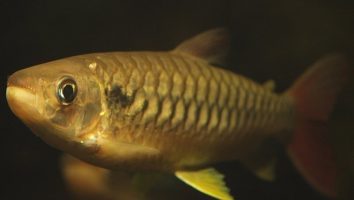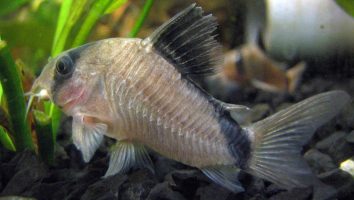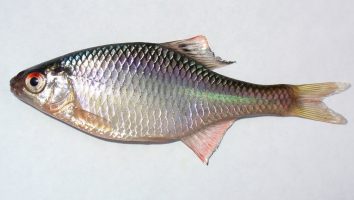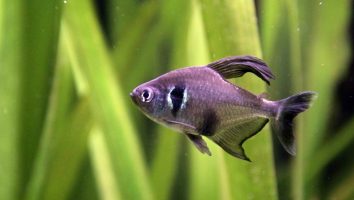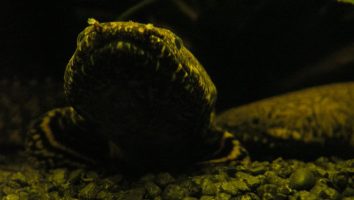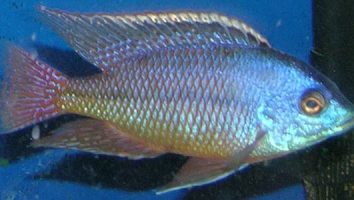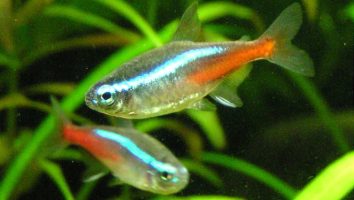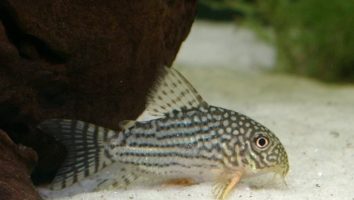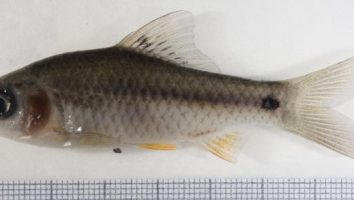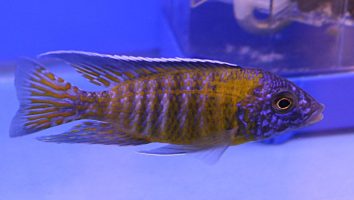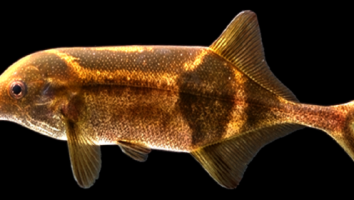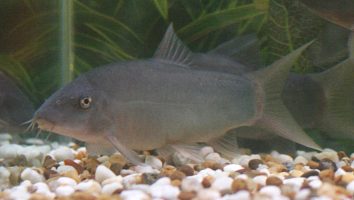The yellow-tail acei is a stunning freshwater fish that is perfect for the beginner aquarist.
This fish is very easy to care for and is very peaceful, making it a perfect addition to any community tank.
This guide will teach you everything you need to know about yellow-tail acei care. You’ll learn about their diet, size, lifespan, and more!
Table of contents
Species overview
The yellow-tail acei (scientific name: Aulonocara stuartgranti) is a type of cichlid that’s native to Lake Malawi in Africa.
They are most commonly found in the southern and central regions of the lake, although they have been known to swim as far north as Nkanda Island.
These fish prefer to live in areas with a lot of rocks and caves. This provides them with plenty of places to hide and feel safe since they are relatively small cichlids.
The yellow-tail acei is a peaceful fish that does well with other cichlids of a similar size. They are not known to be overly aggressive, although they may nip at the fins of other fish if they feel territorial.
These fish are popular in the aquarium scene due to their bright yellow coloration. They are relatively easy to care for, which makes them a good choice for beginner aquarium enthusiasts.
Appearance
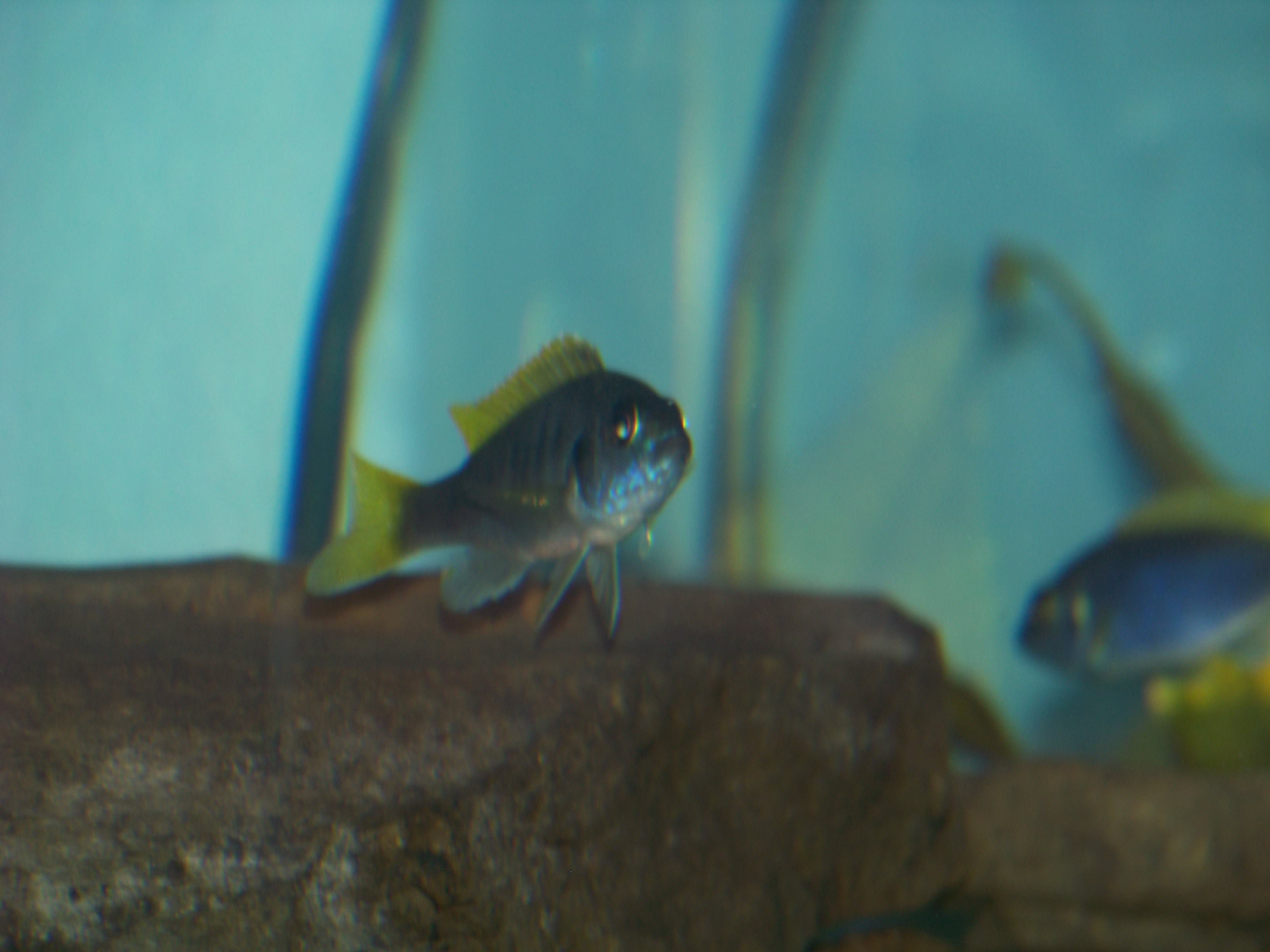
One of the first things you’ll notice about this fish is the bright yellow color on their tailfin. This is where they get their name from and it’s a very striking feature. The rest of their body is a deep blue color that can almost look black at times.
The fins on this species are all fairly standard. The dorsal and anal fins are both medium-sized and begin near the middle of their bodies.
The caudal fin is forked and symmetrical. It’s a bit longer than the other fins on the fish but not by much.
All of the fins on this fish are transparent with a slight yellow tinge (except for the tailfin which is entirely yellow).
The Yellow-tail acei is a small fish that only grows to be about 4 inches in length. They have a long and slender body shape that allows them to swim quickly and easily.
Lifespan
The average lifespan of a yellow-tail acei is between 5 and 8 years. There are a number of factors that impact their life expectancy.
For starters. if these fish haven’t reproduced then their lifespan will usually be on the higher side of this range. That process can really take a toll on the fish.
The general level of care they receive obviously matters a great deal as well. Even though these are very hardy fish, they’ll obviously live longer in optimal conditions.
Size
The Yellow-tail acei can grow to a maximum length of around 6 inches, but they are typically only around 4 inches long. These fish are very slim, so they don’t need a lot of space to swim around.
Tank
Tank Size
Yellow-tail acei cichlids should be kept in a tank that is at least 50 gallons. If you want to keep more than one fish, you will need to increase the size of your tank accordingly. These fish are very active and need a lot of space to swim.
Water Parameters
The yellow-tail acei is a cichlid that is native to Lake Malawi in Africa. These fish do best in an aquarium that has similar water parameters to their natural habitat.
The water in Lake Malawi is warm, with a temperature that ranges from 75 to 82 degrees Fahrenheit. The pH of the water is also on the alkaline side, with a range of 7.8 to 8.6. The water hardness is moderate, with a range of 8 to 12 dGH.
When setting up an aquarium for yellow-tail acei, it is important to maintain these water parameters as closely as possible. These fish are not as adaptable as some other species of fish and sudden changes in water parameters can lead to stress and illness.
- Water Temperature: 75 to 82 degrees Fahrenheit
- pH Levels: 7.8 to 8.6
- Water Hardness: 8 to 12 dGH
- Alkalinity Levels: 4-8 dKH
What To Put In Their Tank
The yellow-tail acei is a peaceful cichlid that does well in a community tank. They are not as aggressive as some of the other cichlids and can be kept with a variety of different fish.
When it comes to setting up the inside of their tank there are a few things you’ll want to take into consideration.
The first is the substrate. These fish like to dig and sift through the sand so you’ll want to use something that’s not too course. A fine sand or small gravel will work well.
The second is the plants. These fish are known to nibble on vegetation, so you’ll want to choose something that can handle that (Hornwort, Water Wisteria, or Java Moss are all great choices).
The third is the decorations. These fish like to have a lot of hiding spots, so we recommend adding some rocks, caves, or driftwood to their tank.
Just make sure that whatever you add is securely in place. These fish are known to dig and can easily uproot things that aren’t properly secured.
Common Diseases
The Yellow-tail Acei is a robust and hardy fish, but that doesn’t mean they can’t get sick. There are a few diseases that seem to target this species in particular.
The first one is Hole-in-the-Head Disease. This is a condition that’s caused by poor water quality and the presence of activated carbon in the tank.
It’s easily recognizable thanks to the one or two pits that form in the head of the fish. While it’s not fatal, it can cause some serious scarring.
The second disease is called Lymphocystis. This is a virus that attacks the fish’s immune system, causing large cysts to form on the skin.
These cysts are usually harmless (although they can burst and release the virus into the water, infecting other fish) but they can be unsightly.
The last disease that commonly affects Yellow-tail Acei is ich. This is a parasite that’s very common in freshwater tanks. It causes white spots to form on the body, fins, and gills of the fish.
While ich is not usually deadly, it can cause a lot of stress for the fish which can lead to other health problems.
The best way to prevent your Yellow-tail Acei from getting sick is to maintain a clean and stable tank. This will keep the water quality high and reduce the risk of disease.
Behavior & Temperament
The yellow-tail acei is a peaceful fish that does best in a community tank. It’s relatively shy, so it’s important to provide plenty of hiding places. The fish will feel more comfortable and be less likely to stress if there are plenty of places for it to hide.
This fish is a bottom-dweller, so it will spend most of its time near the bottom of the tank. It’s an active fish, so you’ll often see it swimming around and exploring its environment.
The yellow-tail acei is a peaceful fish that gets along with other fish. It’s not aggressive and is unlikely to bother other fish. The only time you might see aggression is if the fish feels threatened or is competing for food.
Tank Mates
The yellow-tail acei is a peaceful fish that does well in a community tank. They’re not aggressive and get along with most species.
These fish are also relatively small, so they won’t overwhelm the tank. In fact, they’re often the target of bullies because of their size.
For this reason, it’s best to choose tank mates that are either too large to fit in their mouths or too aggressive to put up with their shenanigans.
Some good yellow-tail acei tank mates include:
- Rainbowfish
- Gouramis
- Tetras
- Danios
- Corydoras
- Plecos
Breeding
The Yellow-tail acei is a beautiful and unique cichlid that is not too difficult to breed in captivity. These fish are mouthbrooders, which means that the female will carry the eggs and fry in her mouth until they are ready to be released.
To trigger spawning, you will need to set up a breeding tank. It should hold at least 50 gallons of water. The water should be soft and slightly acidic. A temperature between 78 and 82 degrees Fahrenheit is ideal.
Add some live plants and plenty of hiding places. These fish like to spawn in caves, so make sure to add some of those to the tank.
When ready, add a group of 6 to 8 fish to the tank. It’s best to have two females for every male.
The spawning process can be a bit violent. The male will chase the female until she is ready to lay her eggs. Once she does, he will fertilize them.
The female will then pick up the eggs in her mouth and carry them around until they hatch. This process takes about two weeks.
Once the fry have hatched, the female will release them. At this point, you can start feeding them baby brine shrimp and other small live foods.
Conclusion
The Yellow-tail Acei is a stunning freshwater fish that is perfect for the beginner aquarist. They are relatively easy to care for and are very peaceful, making them a great addition to any community tank.
While they are not the most active fish, they are still a joy to watch and are sure to add some color and excitement to your tank.
If you are looking for a fish that is beautiful, easy to care for, and peaceful, then the Yellow-tail Acei is the perfect fish for you!

